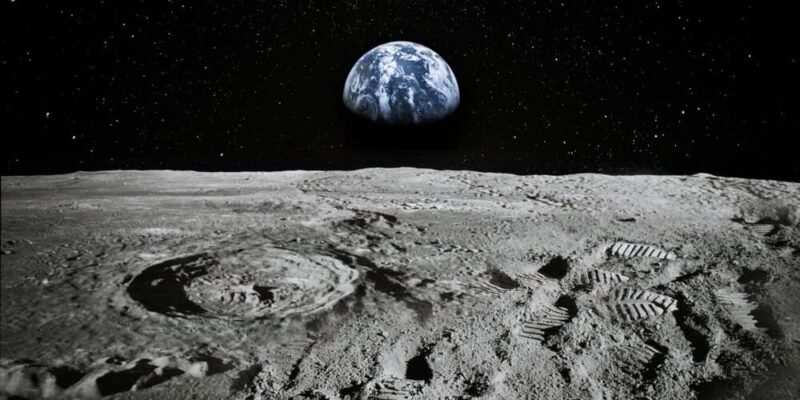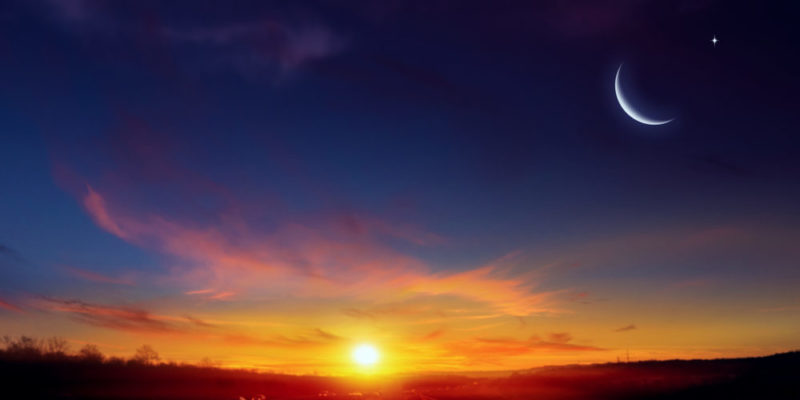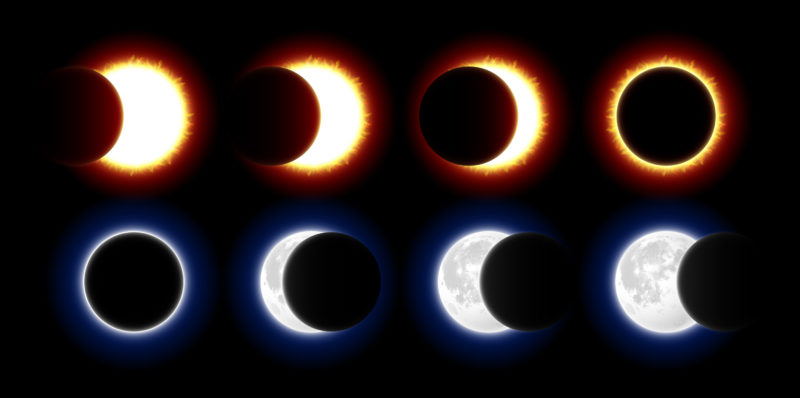We explain what the Moon is, its characteristics and composition. Also, theories about its formation, phases, its importance and more.
What is the moon?
The Moon is the only natural satellite that revolves around the Earth . A natural satellite is a celestial body that orbits a planet . There are planets like Jupiter and Saturn that have more than seventy natural satellites or Venus and Mercury that have none. The Moon is the fifth largest satellite in the Solar System .
Starting in the 1950s, the Space Age emerged and the Moon was the first celestial body, in addition to Earth, that humans tried to reach. Since then, more than 100 robotic scans and more than 10 human-manned missions have been conducted to the Moon. In total, twenty-four humans have traveled and twelve of them have walked on the lunar surface.
In 1969 the first rocket that managed to land on the moon and return to Earth was Apollo 11 in which a crew commanded by Neil Armstrong traveled, the first astronaut to set foot on the Moon. A rocket can take three days from leaving Earth until it reaches the Moon.
Characteristics of the Moon
 Among the main characteristics of the Moon, the following stand out:
Among the main characteristics of the Moon, the following stand out:
- It is located about 385,000 km away from Earth .
- It is the only natural satellite on planet Earth .
- It is the fifth largest moon among the more than one hundred and ninety natural satellites that orbit different planets in the Solar System.
- It is four times smaller than Earth .
- It has a density 40% lower than that of the Earth.
- It has a rocky surface and is full of craters from the impacts of large bodies that managed to pass through its thin atmosphere.
- It helps to stabilize the oscillation that the Earth and the climate make.
- It has very mild seismic activity and little heat flow from the interior.
- It does not have a magnetic field like Earth's, although some surface rocks have permanent magnetism.
- Its density is equivalent to 60% of the density of the Earth, that is why everything on the Moon weighs less than on planet Earth .
Composition of the Moon
The Moon is made up of the following layers:
- Cortex. It corresponds to the lunar surface that is characterized by having a large number of craters.
- Mantle. It corresponds to the second layer after the crust and that most predominates. It is a rigid mantle that becomes semi-solid as it approaches the lunar core. It contains minerals, such as magnesium , silicon, iron and calcium, oxygen, and basalt rocks.
- Lunar nucleus. It corresponds to the innermost part of the celestial body that consists of solid iron surrounded by liquid iron.
Theories about the formation of the Moon
The Moon formed more than four million years ago . There are various theories about its origin and how it was formed, the main one holds that the Earth collided with another young planet, still in the process of formation, and the remains of the collision remained in Earth's orbit until they accumulated and formed the current Moon.
The orbit of the Moon

The lunar orbit is the movement of the Moon around the Earth . It is an elliptical orbit and it performs in an anti-clockwise direction.
The movements of the Moon are:
- Rotatory motion. In which the Moon rotates on itself.
- Translation movement. In which the Moon revolves around the planet Earth.
It is a synchronized movement due to the interaction of the forces of gravity of each celestial body. Due to the synchronicity, the same lunar face is always seen from the Earth and the opposite face that is not seen is called "the hidden face of the Moon".
Importance of the Moon

The Moon is important because it influences various phenomena on planet Earth, such as:
- The tides. Due to the trajectory of the lunar orbit which is in the shape of an ellipse, there are times when the Moon passes closer to the Earth. According to the laws of physics, the closer two objects are, the greater the intensity with which they attract each other. That is why, when the moon passes closer to the planet, the level of the tide rises or rises, because it is attracted by the Moon.
- The weather . Due to the movement of the tides that is generated by the gravitational force in the proximity of the Earth and the Moon, changes occur in the Earth's climate that help maintain its balance.
Moon phases
 The phases of the moon occur at the view from Earth because, while turning around the planet, the moon reflects the light of the sun . There are four lunar phases and each one lasts about a week. The complete cycle lasts 28 days.
The phases of the moon occur at the view from Earth because, while turning around the planet, the moon reflects the light of the sun . There are four lunar phases and each one lasts about a week. The complete cycle lasts 28 days.The four phases of the Moon are:
- New Moon. It is the moment in which the Moon passes between the Earth and the Sun, therefore, from the planet it is not possible to see the lunar face illuminated by the solar star.
- Crescent quarter. It is the moment in which the Moon is observed from the Earth as a crescent half or "half moon" as the days go by. This stage occurs after the new moon.
- Full moon. It is the moment in which the Moon passes farthest from the Sun and, from the Earth, its face is fully illuminated.
- Last quarter . It is the moment in which the Moon is seen again from the Earth as an increasingly thin half as the days go by, until it reaches the next stage of the new Moon.
Eclipses

An eclipse occurs when a planet or moon aligned with the Sun gets in the way that blocks sunlight. Two types of eclipses occur from planet Earth:
- Lunar eclipse. It is the time when the Earth comes between the Sun and the Moon and prevents sunlight from reaching the satellite.
- Solar eclipse. It is the moment when the Moon gets in the way of sunlight on Earth, so the Earth day turns dark for a few minutes.
Cultural journalist with great interest in education and technological innovation in the classroom. The future passes through technology and it is already here. .
Leave a reply
Your email address will not be published. Required fields are marked *Recent post

Sport: What Is It, Types, Risks, Features, Characteristics and Examples

Dogs: Emergence, Features, Characteristics, Feeding and Breeds

Story: Definition, Elements, Structure, Features and Characteristics

